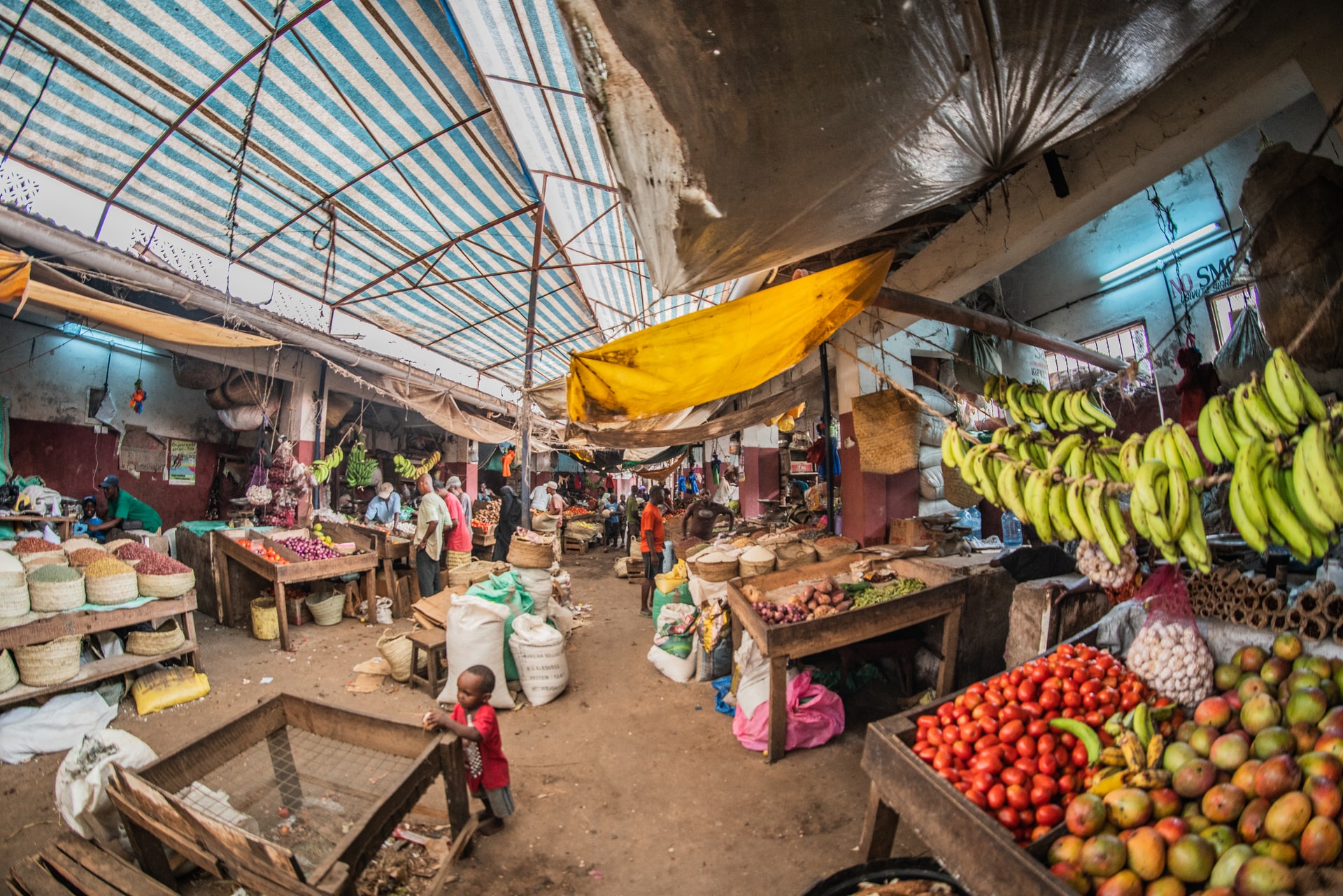Visualizing
the Virus
Gender and COVID-19
Foregrounding Emerging and Intensified Gender Norms
COVID 19 and Invisible Communities was published by Tazama World Media, an emerging Kenyan-based digital publisher. Leveraging powerful graphics and narratives of women and men in Kenya, the article depicts various ways small business owners and communities in Korogocho, Nairobi were adapting and experiencing the effects of the pandemic. The vivid images illuminate the everyday concerns of struggling villages, that are invisible to the government and the larger society. For instance, an image portrays a woman in the Korogocho Kisumu Ndogo village who sells maize and beans. She fears that she may run out of stock because her beans come from Tanzania whose borders have been closed amidst the pandemic. Another image depicts the struggle of obtaining vegetables in some parts of Nairobi because of the trade links have been cut off out of fear of food contamination.
In response to a few images, which can be viewed with my original publication, I suggest we ask how the pandemic has had a significant bearing on gender issues at the level of the state, community markets, and households. The following questions could be investigated: How has the intensification of female caregiving roles during the pandemic affected their participation in the marketplace? How are gender relations between women and men changing as they interact in new and different ways? How can market spaces be more gender-responsive and expand opportunities for women and men in light of changing gender relations and roles?
I argue that state policies applied without due consideration to the realities of different communities during the pandemic, have affected the practices and gendered norms of women and men in the marketplace and can intensify inequalities for women and men in low income, marginalized communities.



